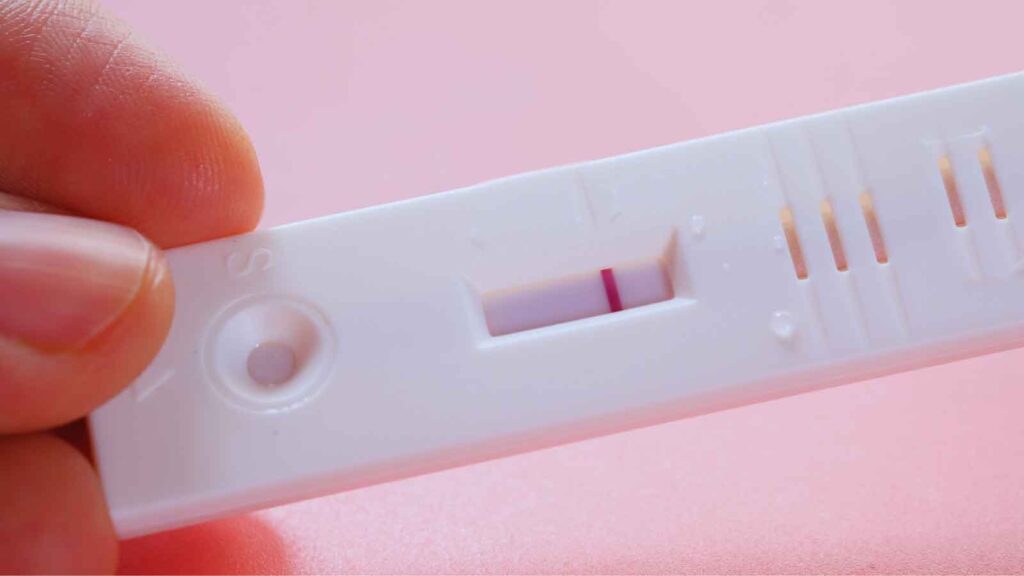Fibroids can have a complex impact on a woman’s reproductive health, particularly for those trying to conceive. While these growths are common and often benign, their influence on fertility varies based on factors such as size, location, and number. For many women, fibroids may not interfere with conception or pregnancy, but understanding when they might is crucial for informed planning.
This guide covers essential information on fibroids and fertility, including how they are identified, how they might impact the ability to get pregnant, and what to expect during pregnancy if fibroids are present. Fibroids can form inside the uterine lining (submucosal), within the muscle wall (intramural), or on the outer surface (subserosal). Their potential impact depends largely on where they develop and how they interact with reproductive structures.
Identifying Symptoms and Risks
Fibroids are often silent but can present symptoms that directly or indirectly impair fertility. Identifying the warning signs and understanding how fibroids may affect the reproductive system allows for earlier diagnosis, appropriate intervention, and better fertility outcomes.
What Symptoms Should I Look For?
Fibroid symptoms can vary based on their size, location, and number. While some women have no symptoms at all, others experience issues that interfere with day-to-day life or reproductive planning.
Key symptoms that may signal a reproductive impact include:
- Heavy or prolonged menstrual bleeding: Excessive bleeding can lead to anemia and fatigue and may also suggest fibroids are altering the endometrial lining.
- Pelvic pain or pressure: A feeling of fullness, heaviness, or pressure in the pelvic region may result from fibroids pressing on surrounding structures, including the uterus or bladder.
- Dyspareunia (pain during intercourse): Fibroids located near the cervix or within the uterine wall can cause discomfort during or after sex, often reducing sexual activity during fertility windows.
- Urinary frequency or bowel irregularity: Larger fibroids can press against the bladder or rectum, disrupting normal urinary or gastrointestinal function.
- Chronic abdominal distension or bloating: A swollen abdomen unrelated to weight gain may indicate fibroid growth.
- Difficulty conceiving: Repeated unsuccessful attempts to conceive, particularly when combined with other symptoms, warrant evaluation for fibroids.
While these symptoms are not exclusive to fibroids, their presence, especially in the context of infertility, should prompt further investigation.
Diagnosis and Evaluation Methods
A timely and accurate diagnosis of uterine fibroids is critical in assessing their impact on fertility. Clinical evaluation includes a combination of physical examination, patient history, and targeted imaging techniques. These methods help determine not only the presence of fibroids but also their location, size, and potential influence on reproductive health.
Are Fibroids Diagnosed?
Diagnosing uterine fibroids begins with a comprehensive pelvic examination to assess uterine shape, mobility, and consistency. However, a physical exam alone cannot confirm the number or type of fibroids. Imaging plays a vital role in diagnosis and treatment planning.
The most commonly used diagnostic tools include:
- Transvaginal ultrasound
This is the first-line imaging technique for identifying fibroids. It allows for the evaluation of fibroid size, location, and proximity to the endometrial cavity. It is non-invasive and often used during routine OBGYN visits. - Magnetic resonance imaging (MRI)
MRI provides high-resolution images and is used when more detailed mapping is needed, especially before surgical planning. It distinguishes between fibroid types and helps assess their relationship to reproductive structures. - Saline infusion sonogram (SIS)
By injecting saline into the uterus during ultrasound, SIS creates clearer outlines of the endometrial cavity. It is particularly useful for identifying submucosal fibroids that may interfere with implantation. - Hysteroscopy
This involves inserting a thin camera through the cervix to visualize the uterine lining directly. It is valuable for assessing and potentially removing submucosal fibroids during the same procedure.
Accurate diagnosis allows your OBGYN specialist to evaluate how fibroids are interacting with the uterus and whether treatment is needed to improve fertility or reduce symptoms.
What Are Signs of Fibroid Shrinking?
Fibroid size can decrease naturally or as a result of treatment. In women nearing menopause, estrogen levels decline, often leading to fibroid regression. In younger patients, targeted hormonal therapies may reduce fibroid volume.
Clinical indicators of fibroid shrinkage include:
- Reduced menstrual bleeding
Lighter or shorter periods may indicate that fibroids have shrunk or become less active hormonally. - Decreased pelvic pressure
Less discomfort, bloating, or a reduced sensation of fullness in the lower abdomen suggests a reduction in fibroid size. - Smaller fibroids on imaging
Follow-up ultrasounds or MRIs provide objective measurements to confirm whether fibroids respond to treatment or shrink over time. - Fewer urinary or gastrointestinal symptoms
Improved bladder and bowel function can reflect reduced external compression caused by large fibroids.
Regular monitoring ensures that fibroids are not interfering with fertility goals or quality of life. If symptoms persist or worsen, further evaluation is warranted to consider medical or surgical intervention.
Treatment and Fertility Planning
Fibroid treatment must consider the individual’s reproductive goals, fibroid type, and symptom severity. Preserving uterine integrity and optimizing fertility outcomes are top priorities for those trying to conceive. Not all fibroids require removal, but targeted intervention can significantly improve pregnancy outcomes when fertility is affected.
What Treatment Options Are Available for Fibroids?
Managing uterine fibroids in patients who wish to preserve fertility requires a carefully personalized approach. Treatment options depend on fibroid size, location, number, and the patient’s overall reproductive goals. Some patients may benefit from medical management, while others require surgical intervention.
Common treatment options include:
- Hormonal therapy: Medications like gonadotropin-releasing hormone (GnRH) agonists can temporarily shrink fibroids by lowering estrogen levels. These are often used before surgery or for short-term symptom management but are not long-term solutions for women trying to conceive.
- Myomectomy: Considered the gold standard for women with fibroids impacting fertility, myomectomy removes fibroids while preserving the uterus. Techniques include hysteroscopic, laparoscopic, or robotic approaches based on fibroid characteristics.
- Hysteroscopic myomectomy: A minimally invasive procedure ideal for submucosal fibroids. It is performed through the cervix without abdominal incisions, offering a quicker recovery and improved fertility outcomes.
- Laparoscopic or robotic myomectomy: Recommended for intramural and subserosal fibroids. Robotic assistance provides enhanced precision, smaller incisions, and a faster recovery, making it an excellent option for patients planning pregnancy.
- Uterine artery embolization (UAE): This procedure reduces blood flow to fibroids to shrink them but is not typically recommended for women pursuing pregnancy, as it can affect uterine and ovarian function.
Not all fibroids require treatment, especially if they are small and not affecting fertility or causing symptoms. A comprehensive evaluation with an OBGYN specialist ensures the most appropriate strategy is chosen based on your unique fertility goals.
Will Removing Fibroids Help Me Conceive?
For patients whose fertility is compromised by fibroids, surgical removal, particularly via myomectomy, can significantly improve pregnancy outcomes. Removal of submucosal fibroids has been consistently associated with better implantation rates and higher pregnancy success, especially for patients undergoing fertility treatments like IVF.
In some cases, large intramural fibroids that distort the uterine contour may also need to be removed. However, not all intramural fibroids require surgery unless they are associated with repeated implantation failure or recurrent miscarriage. Your reproductive goals, imaging results, and clinical symptoms should always guide the decision to proceed with surgery.
Recovery time after myomectomy is crucial to allow for proper uterine healing. Most patients are advised to wait several months before attempting conception. Surgical success depends on appropriate technique, timing, and a coordinated plan for post-operative fertility support. Your care team will help determine whether fibroid removal will improve your chances of conceiving and carrying a healthy pregnancy.
Pregnancy Expectations With Fibroids
Pregnancy is possible and often successful for many women with uterine fibroids. However, specific fibroid characteristics such as size, number, and location can influence outcomes. Patients should be aware of potential risks and work closely with an OBGYN specialist to ensure optimal care throughout their pregnancy.
Can I Still Get Pregnant With Fibroids?
A diagnosis of fibroids does not automatically prevent pregnancy. Many women with fibroids successfully conceive and carry pregnancies to term without complications.
However, certain fibroids, especially those that distort the uterine cavity or block the fallopian tubes, can make conception more challenging. In many cases, fibroids are discovered during routine pregnancy ultrasounds and may require only observation.
For patients with fibroids, early evaluation and counseling with an OBGYN specialist can help assess whether management is needed before pregnancy.
What Should I Expect During Pregnancy?
Patients with fibroids who become pregnant may require additional monitoring, especially if the fibroids are large, numerous, or distort the uterine cavity.
Potential complications include:
- Miscarriage risk: More common with large submucosal fibroids or those distorting the uterine lining.
- Preterm labor: Fibroids may trigger early labor by increasing uterine irritability or limiting space.
- Placental abruption: Especially when fibroids are near the placenta.
- Restricted fetal growth: Compression of the uterine cavity can limit fetal development.
- Cesarean delivery: Fibroids blocking the cervix may necessitate surgical delivery.
When fibroids pose these risks, a high-risk pregnancy care plan is often recommended. This includes regular ultrasounds, monitoring of both fetal growth and fibroid behavior, and individualized delivery planning. In some cases, delivery at a facility experienced in managing complex pregnancies is necessary. If fibroids are only one factor, it may also be helpful to explore infertility treatment options for both partners to address all possible contributing causes.
Schedule an Appointment With Roswell Ob/Gyn, LLC Today
If you’re concerned about fibroids and fertility, the right care team can significantly improve your outcome. At Roswell Ob/Gyn, we provide evidence-based, patient-focused care that protects fertility, manages uterine fibroids, and supports healthy pregnancies, even in complex or high-risk pregnancy situations.
Our board-certified OBGYN specialists offer advanced diagnostic tools, including in-office ultrasound and hysteroscopy, along with surgical options like myomectomy that are carefully tailored for women who wish to conceive. Take the next step toward clarity and confidence. Schedule your consultation with Roswell Ob/Gyn today and let our experienced team help you make informed decisions for your reproductive future.



